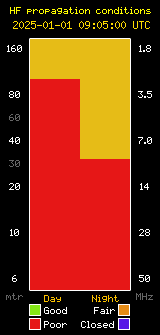Most of us have expensive and sensitive electronic equipment such as radios, power supplies, amplifiers, antenna tuners, and various other pieces of amateur radio gear. Hopefully, most of us also use some sort of surge protection on any of these devices that are exposed to normal AC house power. Of course, most of us also have computers and we have long been aware that these need surge protection to protect precious data. Unfortunately, for a lot of us, this is about as far as our surge protection efforts go. Over the past couple of years, we have experienced numerous “planned service interruptions” by Southern California Edison. At last count, mine have totaled 12 since January 2020. Don’t even mention the number of unexpected outages! On more than one occasion voltage surges when power is restored on have damaged my electronics. I have a “smart home” with about 60 remote controlled switches and outlets that are especially vulnerable. Usually when I experience a problem after an outage, it involves reprogramming the switch or outlet. Unfortunately, sometimes the device gets fried and replacements are generally $50+. Just about everything has some sort of “computer” in it. Last year, after a planned power outage, the main computer board in my Sub Zero refrigerator got fried and a lot of our food spoiled. Luckily I was able to troubleshoot the problem and buy a replacement main board for around $200 and replace it myself. Had it been necessary to call in a Sub Zero trained technician, the cost would have been more than $1200! After this event, I bought a surge protector specifically designed for refrigerators. I started taking an inventory of everything in my house that used sensitive electronics and realized there were many more items potentially exposed to surge related failure. These include washers and dryers, water softeners, dishwashers, clocks, televisions, stereo components, furnaces, and the list goes on and on. Many of these devices are hard wired and it would be difficult to provide surge protection for each one. The obvious solution would be some sort of whole-house surge protection. After some research, I found that whole house surge protection would be much easier and far less expensive than I anticipated. What I decided to go with is a simple 2 pole circuit breaker installed in my main electrical panel. I have Eaton Panels and sub-panels, so I purchased the above… Continue reading →










